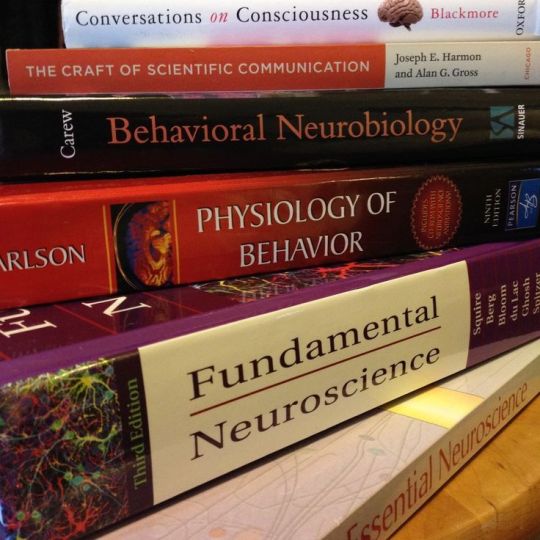#BioChemistry
Explore tagged Tumblr posts
Text
Scientists have identified a natural compound that halts the process involved in the progression of certain forms of cancer and demyelinating conditions—those that damage the sheath, known as myelin, that surrounds neurons—such as multiple sclerosis. A study published in the Journal of Biological Chemistry found a plant-derived flavonoid—a type of chemical compound—called sulfuretin blocked the activity of an enzyme involved in MS and cancer.
Continue Reading.
169 notes
·
View notes
Text



You guys wanna see a science Lego set? Well, here's Lego DNA!
With a scientifically accurate DNA model, and a historically accurate lab + 5 scientists!
Aims: to promote science to kids and honor Rosalind Franklin.
Less than 600 votes needed to reach 10K when it will be considered as a real official Lego set to be sold worldwide!
If you like it, please support here and share with your friends: https://ideas.lego.com/projects/c92cd95b-49e7-46ec-b844-ac6482c51139
More details below!











#chemistry #science #biology #design #diy #education #nature #environmental science #molecular biology #stem #women in stem #research #laboratory #women scientists #school #university #college #students #learning #lego art #lego photography #afol #lego sets #lego ideas #lego builds #lego moc #rosalind franklin #james watson #francis crick #university student
#biology#chemistry#college#afol#science#design#diy#education#nature#environmental science#environment#stem#women in stem#stemblr#stem student#stem academia#biochemistry#phd#university#universidad#lego art#lego moc#moc#lego photography#lego minifigures#molecular biology#molecules#research#knowledge#intelligence
2K notes
·
View notes
Text
9 more days of the semester (5/4/2025)
Studied for my immunology final again
Honestly slept for most of the day. I'm so over this semester 🫡


#study blog#study motivation#study life#journal#studyblr community#student#studyspo#studyblr#studying#student life#stem#women in stem#phd#stem academia#biochemistry#stemblr#physics#stem student#academics
110 notes
·
View notes
Text
"A team of researchers at Washington University in St. Louis has developed a real-time air monitor that can detect any of the SARS-CoV-2 virus variants that are present in a room in about 5 minutes.
The proof-of-concept device was created by researchers from the McKelvey School of Engineering and the School of Medicine at Washington University...
The results are contained in a July 10 publication in Nature Communications that provides details about how the technology works.
The device holds promise as a breakthrough that - when commercially available - could be used in hospitals and health care facilities, schools, congregate living quarters, and other public places to help detect not only the SARS-CoV-2 virus, but other respiratory virus aerosol such as influenza and respiratory syncytial virus (RSV) as well.
“There is nothing at the moment that tells us how safe a room is,” Cirrito said, in the university’s news release. “If you are in a room with 100 people, you don’t want to find out five days later whether you could be sick or not. The idea with this device is that you can know essentially in real time, or every 5 minutes, if there is a live virus in the air.”
How It Works
The team combined expertise in biosensing with knowhow in designing instruments that measure the toxicity of air. The resulting device is an air sampler that operates based on what’s called “wet cyclone technology.” Air is sucked into the sampler at very high speeds and is then mixed centrifugally with a fluid containing a nanobody that recognizes the spike protein from the SARS-CoV-2 virus. That fluid, which lines the walls of the sampler, creates a surface vortex that traps the virus aerosols. The wet cyclone sampler has a pump that collects the fluid and sends it to the biosensor for detection of the virus using electrochemistry.
The success of the instrument is linked to the extremely high velocity it generates - the monitor has a flow rate of about 1,000 liters per minute - allowing it to sample a much larger volume of air over a 5-minute collection period than what is possible with currently available commercial samplers. It’s also compact - about one foot wide and 10 inches tall - and lights up when a virus is detected, alerting users to increase airflow or circulation in the room.
Testing the Monitor
To test the monitor, the team placed it in the apartments of two Covid-positive patients. The real-time air samples from the bedrooms were then compared with air samples collected from a virus-free control room. The device detected the RNA of the virus in the air samples from the bedrooms but did not detect any in the control air samples.
In laboratory experiments that aerosolized SARS-CoV-2 into a room-sized chamber, the wet cyclone and biosensor were able to detect varying levels of airborne virus concentrations after only a few minutes of sampling, according to the study.
“We are starting with SARS-CoV-2, but there are plans to also measure influenza, RSV, rhinovirus and other top pathogens that routinely infect people,” Cirrito said. “In a hospital setting, the monitor could be used to measure for staph or strep, which cause all kinds of complications for patients. This could really have a major impact on people’s health.”
The Washington University team is now working to commercialize the air quality monitor."
-via Forbes, July 11, 2023
-
Holy shit. I know it's still early in the technology and more testing will inevitably be needed but holy shit.
Literally, if it bears out, this could revolutionize medicine. And maybe let immunocompromised people fucking go places again
Also, for those who don't know, Nature Communications is a very prestigious scientific journal that focuses on Pretty Big Deal research. Their review process is incredibly rigorous. This is an absolutely HUGE credibility boost to this research and prototype
#covid#covid 19#pandemic#plague#rsv#influenza#the flu#science and technology#medical research#medical technology#biochemistry#immunology#good news#hope#hope posting
6K notes
·
View notes
Text



my desk during covid year was so good i miss her :(
#study#study aesthetic#studyblr#study blog#student#study motivation#study with me#study desk#study inspiration#study notes#stem academia#stemblr#women in stem#stem#stem student#chemistry#biochemistry#animal science#science#research#biology#biomedicine#biomedical
104 notes
·
View notes
Text
BREAKING NEWS: Tumblr user ryan-sometimes now has a bachelor’s of science in biochemistry with a minor in science education from UCLA!






#they gave the Brazilian autistic nonbinary lesbian a degree????#scientist#science#stem#biochemistry#biochem#chemistry#lgbtq#lgbt#sapphic#lesbian#wlw
275 notes
·
View notes
Text
STEM degrees be like “you wanted to work on yourself and build your relationships? Hahaha no” *casts curse of 1 million pages of notes and 750 essential readings on u*
155 notes
·
View notes
Text
14.05.2025


-cleaned my room
-studied maths
-studied chemistry
#studyblr#i wanna kms#chaotic studyblr#academic victim#fuck chemistry#study motivation#chaotic academia#i hate chemistry#productivity challenge#i'm failing chem#chemistry#fuck biochem#i hate biology#biochemistry#fuck biology#academic weapon#academic validation#student life#i hate studying#study#study inspiration#study aesthetic#study blog#study blr#study space#studyspiration
114 notes
·
View notes
Text
With the fast fashion industry… how it is… finding sustainable ways to make fabric is super important. Fibers from synthetic fabrics make up 35% of the microplastics that make their way to the ocean. Natural fibers sourced from plants or animals are much more environmentally sound options, including silk.
Currently, the only way to get natural silk on a large scale is to harvest it from silkworms. You’ve probably heard about the strength and durability of spider silk (it is 6x stronger than Kevlar!) but as of yet there hasn’t been a good way of getting it. Raising spiders the way people do silkworms isn’t really an option. Spiders need a lot of room to build their webs compared to silkworms, and individual spiders don’t produce that much silk. Plus, when you put a whole bunch of spiders in captivity together, they tend to start eating each other.
Attempts to artificially recreate spider silk have also been less than successful. Spider silk has a surface layer of glycoproteins and lipids on it that works as a sort of anti-aging “skin”- allowing the silk to withstand conditions such as sunlight and humidity. But this layer has been very tricky to reproduce.
However, as scientists in China realized, silkworms produce that same kind of layer on their silk. So what if we just genetically modified silkworms to produce spider silk?
That is exactly what the researchers at Donghua University in Shanghai did. A team of researchers introduced spider silk protein genes to silkworms using CRISPR-Cas9 gene editing and microinjections in silkworm eggs. In addition to this, they altered the spider silk proteins so that they would interact properly with the other proteins in silkworm glands. And it worked! This is the first study ever to produce full length spider silk proteins from silkworms.
The applications of this are incredibly exciting. In addition to producing comfortable textiles and new, innovative bulletproof vests, silkworm generated spider silk could be used in cutting edge smart materials or even just to create better performing sutures. In the future, this team intends to research how to modify this new spider silk to be even stronger, and they are confident that “large-scale commercialization is on the horizon."
#science#chemistry#biology#sustainability#fashion#bugs#spiders#silkworms#nature#biochemistry#stemblr#genetics
5K notes
·
View notes
Text

Highly scientifically accurate depiction of me and my friends sharing one brain cell during the lectures.
#science#stemblr#stem#chemistry#biochemistry#this was a absolute banger with my uni friend groups and the humor feels very tumblr
194 notes
·
View notes
Text
p sure my humor peaked when i took biochem in college bc i regained access to my notes and oh man









#personal#biochem#biochemistry#when I say is somebody gonna match my freak This is what I mean#the original slide deck is 137 slides of pure stupid chemistry humor and also reactions#god I miss chemistry#chemistry memes#chemistry#biology
197 notes
·
View notes
Text

Scientists are profoundly unserious
425 notes
·
View notes
Note
Let's try the legendary Brain Power chorus:
Let the bass kick
O-0000O00000 AAAAE-A-A-|-A-U- JO-
O0000O00000O AAE-O-A-A-U-U-A- E-eee-ee-eee AAAAE-A-E-I-E-A- JO-000-00-00-oo EEEEO-A- AAA-AAAA
O-o000o00000 AAAAE-A-A-l-A-U-JO-
O00000000000 AAE-O-A-A-U-U-A- E-eee-ee-eee AAAAE-A-E-|-E-A-
JO-o00-00-00-0o EEEEO-A-AAA-AAAA
O-o00O00000o AAAAE-A-A-|-A-U- JO-
O0000O00000o AAE-O-A-A-U-U-A- E-eee-ee-eee AAAAE-A-E-I-E-A-
JO-000-00-00-0o EEEEO-A-AAA-AAAA-
O---------
oh i am very interested to see how this turns out
letter sequence in this ask matching protein-coding amino acids:
LettheasskickAAAAEAAAAAEAAAEeeeeeeeeAAAAEAEIEAEEEEAAAAAAAAAAAAEAAlAAAEAAAEeeeeeeeeAAAAEAEEAEEEEAAAAAAAAAAAAEAAAAAEAAAEeeeeeeeeAAAAEAEIEAEEEEAAAAAAAA
protein guy analysis:
well this is a long one. and by that i mean that the structure itself is just one long helix. for what it's worth, the confidence is pretty good. this makes enough sense, given that both alanine (A) and glutamate (E) tend to prefer to be in alpha helices. overall, this is just a silly little guy and i'm very happy with it
predicted protein structure:

#science#biochemistry#biology#chemistry#stem#proteins#protein structure#science side of tumblr#protein asks
233 notes
·
View notes
Text
3 more days of the semester (5/10/2025)
More review for chem final!
Finished all of my assignments 🥳
Listened to all of the family drama.. bleh


#study motivation#study blog#student life#journal#studyblr community#studyspo#study life#student#studying#studyblr#stem#women in stem#science#stem academia#biochemistry#stemblr#sciblr#stem student#physics#realistic studyblr#study space#study with me
213 notes
·
View notes
Text
Research led by Zhejiang Agriculture and Forestry University in China has performed a metadata investigation into the presence of microplastics in humans. They report a concerning relationship between micro and nanoplastic (MNP) concentrations in damaged tissues and links with multiple health conditions. Plastic usage soared from 1.5 million metric tons in the 1950s to nearly 390.7 million in 2021. With the increased use in consumer products came elevated microscopic plastic pollution circulating in soil and waterways, eventually accumulating in the environment, food webs and human tissues.
Continue Reading.
262 notes
·
View notes